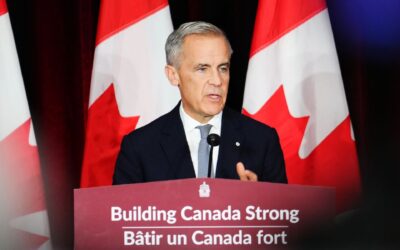Against a backdrop of extreme heatwaves and fires in British Columbia, without a doubt exacerbated by climate change, progress on reducing greenhouse gas emissions can’t come too soon.
The good news is that, as we enter the second half of 2021, Canada finally has a framework in place to help accelerate this positive transition. In one of its final acts before recessing for the summer, Parliament adopted Canada’s climate accountability act (Bill C-12). The Bill cements Canada’s net zero target into law, mandates that legally-binding milestones be set on route to 2050, and establishes formal governance structures and accountability measures to help keep government on track.
This type of approach is not a new concept. Governments around the world have legislated similar framework—including in nations that are now achieving deep carbon reductions such as the UK. Though by no means a silver bullet—C-12 can’t guarantee that Canada will meet its climate targets, it will certainly help. Experience globally has shown that through enhanced transparency and accountability, and regular opportunities for course correction, these laws can play an important role in keeping governments on track.
This process has now begun in Canada. With C-12’s adoption, the new Net-Zero Advisory Body has launched the framework for its advice—a good start. The next step is for the federal government to chart out the emissions reduction plan for achieving the 2030 target (due within six months). This plan must also include an interim greenhouse gas emissions objective for 2026, which adds more certainty about the path to 2030.
There are big questions about what this plan should include. The Institute’s Net Zero report, and others, found that getting to 2030 is primarily about moving forward confidently with “safe bet” solutions as quickly as possible (things like improving energy efficiency, generating cleaner electricity, and using this clean electricity to replace fossil fuels in the cars we drive and the systems we use to heat our homes).
Interestingly, these plans are also required to provide a summary of cooperative measures with other governments in Canada and may also include details about initiatives undertaken by those governments (as well as the private sector and Indigenous Peoples). This represents an opportunity for collaboration between all orders of government. It’s also an opportunity to provide more clarity about what additional efforts might be needed to close gaps in ambition and drive meaningful change.
The period of inter-governmental discussion leading to the creation of Canada’s mandated emissions reduction plan by the end of the year will coincide with the United Nations climate change summit in Glasgow. Governments around the world have already begun to accelerate their emissions reduction plans in advance of this event. And the UN’s advisory Intergovernmental Panel on Climate Change is working on an historic assessment of how climate change is already impacting the planet.
Throughout the next few months, the Canadian Climate Institute will be releasing a series of reports to inform this intense period of work and planning. We will be releasing a variety of longer and shorter studies related to key topics such as the impact of climate change on infrastructure and the Canadian economy and necessary next steps to electrify the economy. In assembling this innovative work, we will be consulting widely across the country.
The adoption of C-12 is an inflection point in the climate change debate in this country. After arguing for years regarding the rules of the road, Canada finally has the governance and accountability structures in place to accelerate the emissions reduction journey. Time to get a move on.








